Boon asked me to post an example of repotting a tree into a two-hole pot – my small pine is a good candidate. Here’s the rootball after removing it from the pot.

Before root-work – one year of growth
I was conservative with the root-work as I had yet to determine which pot would be best for the tree. I ended up removing almost half of what you see below.
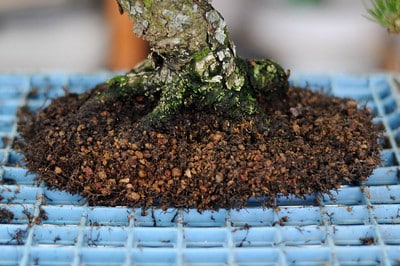
After root-work
I ultimately selected a 2-hole pot for the tree. Wiring a 2-hole pot is simple. After securing the screens, I placed two wires through the inside edge of the drainage holes. Depending on the location of the holes, measuring tie-down wires for 2-hole pots is similar to measuring them for 4-hole pots. I begin by measuring the sum of two long sides and one short side, but then use a bit less.
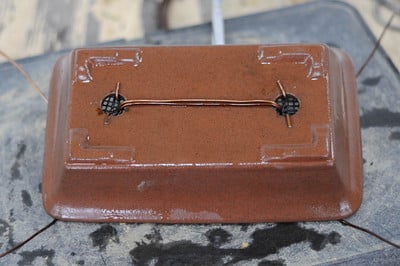
Wired pot from below
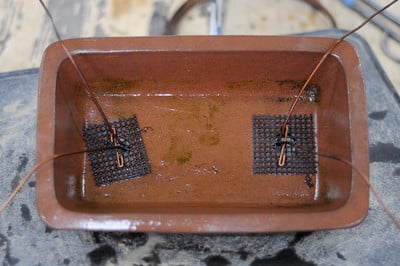
Wired pot from above
It took some work to get the rootball to fit into the pot. In lieu of a full drainage layer, I placed a few tablespoons of pumice over each drainage hole, covered the bottom of the pot with a thin layer of bonsai soil, and left a small mound in the center of the pot.
When Boon and I set the tree, a root in back pushed the trunk towards the front of the pot. To keep the tree centered, we added a little soil along the front of the pot and secured that side first.
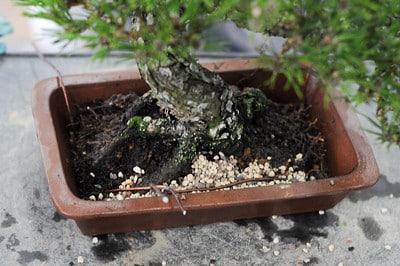
Securing the front
Next we did the same for the back of the tree. The first step is connecting the two ends of the wire by hand. Once the connection is made, the wires are tightened with pliers.
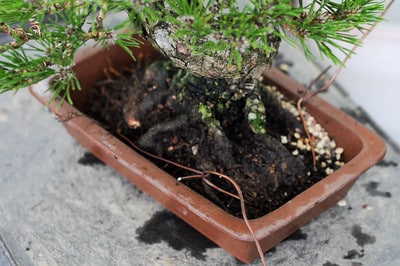
Securing the back
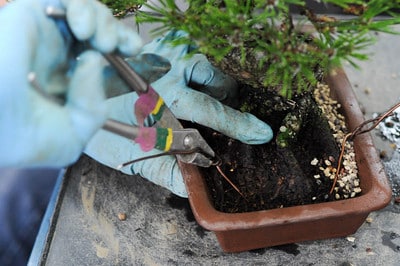
Tightening the wire with pliers
You’ll notice that the wires are connected off-center. The primary reason for this is that there are more good roots on the left side of the rootball than there are on the right side. Securing the wires over a root – or at least over solid rootball – helps keep the tree snug in the pot. It also prevents over-tightening the wires. When the connection is floating it’s harder to tell when to stop tightening the wires.
You’ll also notice the tails of the wires are somewhat long. Because the holes on the bottom are fairly close together and the rootball is small, I could have saved wire by cutting shorter tie-wires. Bimbo!
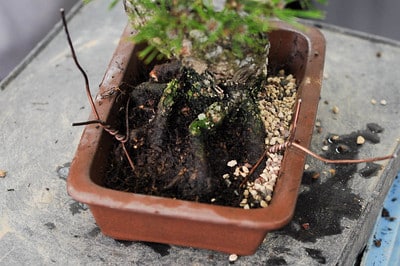
Tree secured
After securing the tree, I like to check to make sure the tree didn’t shift in the pot while I tightened the wires. If it has moved, it’s much easier to correct before filling the pot with soil.
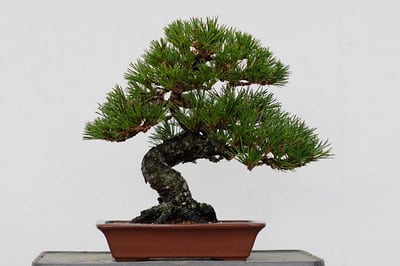
Repotting complete
The tree stayed put. Once the soil was added and the tree watered, I finished the surface of the soil with moss for exhibit. More on that next time.
Subscribe to Bonsai Tonight
New Posts Delivered Every Tuesday and Friday
John Kirby says
Nice thread Jonas. It looks very, very good in its new pot.
John
AlexV says
Two hole pots give me fits, nice description.
I don’t suppose you could post some highlights from the show in a coming post for us orphans trapped in the midwest?
Alex